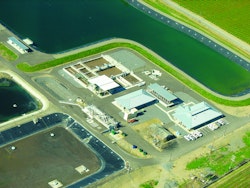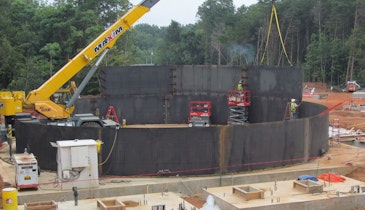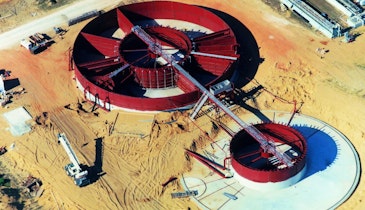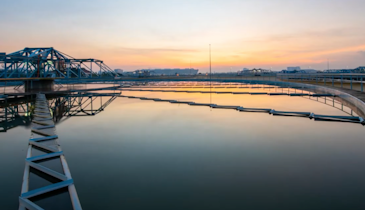
The city of Healdsburg Wastewater Treatment Plant is located 60 miles north of San Francisco in the heart of the picturesque Sonoma County. Prior to the upgrade, the facility consisted of aerated lagoons that discharged into the Russian River via an effluent pond. In 2004, a U.S. district court designated the existing effluent pond as “waters of the United States" thereby making the Healdsburg plant subject to the Clean Water Act and necessitating the need for a National Pollutant Discharge Elimination System Permit.
Challenge
The city of Healdsburg needed to initiate a plan that not only addressed the impending new regulatory requirements but also the increasing water needs of its flourishing wine industry. To meet these requirements, the upgrade project would have to increase the level of treatment from secondary to tertiary, or Advanced Wastewater Treatment standards, which would allow treated wastewater to be reclaimed for irrigation of agriculture or public areas.
Solution
The city and HDR investigated two options to determine how best to meet its future water needs: a conventional BNR plant with tertiary treatment or an MBR plant. Ultimately, the MemPulse MBR system by Evoqua Water Technologies was selected. The grounds for the selection were the following:
- The MemPulse system process had the lowest present worth over a 20-year life cycle cost analysis
- The system would give the city the opportunity to advance the treatment to the best level possible
- The technology was robust enough to meet current and future regulations
- The Evoqua MEMCOR team’s industry experience
The Healdsburg Wastewater Treatment Plant became one of the most advanced and innovative treatment facilities in California. The plant was designed to have an average dry weather flow of 1.4 mgd with a sustained peak of 4 mgd. The old treatment lagoons are now used as equalization basins during winter storm events, which allowed the city to build the treatment plant with a smaller peak flow than it would otherwise need for handling these events.
Process overview
The Healdsburg WWTP consists of two parallel biological trains configured in a Modified Ludzack-Ettinger process for biological nitrogen removal and five membrane tanks with a common overflow weir. The membrane operating system has been designed so that one tank can be out of service in all flow conditions for maintenance or cleaning. The filtrate is drawn through the membrane surface by applying a suction pressure from a rotary-lobe positive displacement pump. As this occurs, the suspended solids and bacteria are retained in the mixed liquor and returned to the biological system by overflow. Each membrane tank was equipped with 128 immersed membrane modules.
The filtrate flows through low-pressure, high-intensity UV lamps and then to discharge. Ultimately, virtually all the plant effluent will be reclaimed for unrestricted reuse.
Results
- Consistent, reliable operation for over 10 years
- Sustained process performance meeting peeks of 95% of design flow
- Compliance with effluent discharge limits — meeting or exceeding turbidity targets
- Reliable pathogen rejection that you can trust with Evoqua B4ON
Contact an Evoqua Water Technologies technical expert to learn how system design, operational simplicity, consistent maintenance and superior membranes deliver high-quality effluent.





